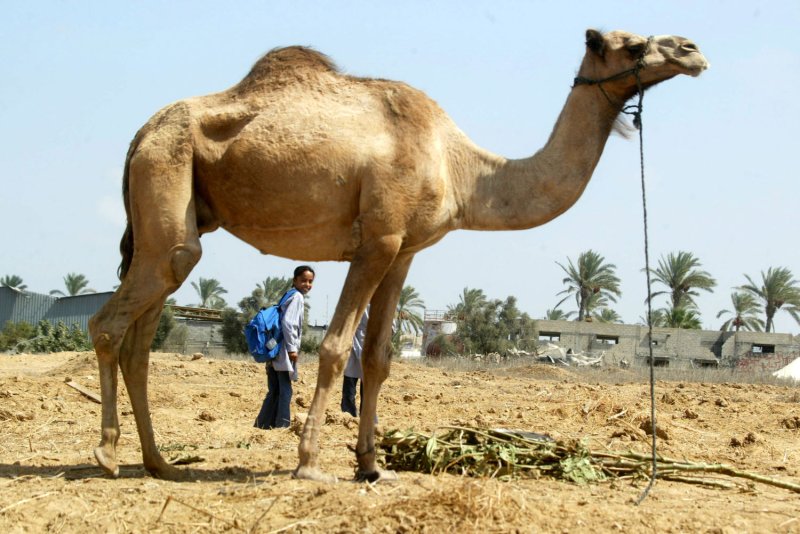Further evidence MERS-CoV in humans acquired directly from camels.
(UPI photo/Ismael Mohamad). |
License Photo
JEDDAH, Saudi Arabia, June 4 (UPI) -- A case study found Middle East Respiratory Syndrome coronavirus detected in sick camels before infecting a 44-year-old man in Saudi Arabia.
On Nov. 3, 2013, a previously healthy man was admitted to the intensive care unit at King Abdulaziz University Hospital in Jeddah, Saudi Arabia, with severe shortness of breath, but eight days before, he had fever, rhinorrhea, cough and malaise. He became progressively worse and died on Nov. 18.
The patient owned a herd of nine camels that he kept in a barn. He and three friends visited the camels daily until three days before his admission to the hospital. The friends said four of the camels had been sick and had a nasal discharge. Before the patient had been ill, he had been applying a topical medicine in the nose of one of the sick camels.
The friends said they had no contact with the sick camel's nasal discharge. Sixty days after the patient became ill the friends have not reported any illness.
The patients's 18-year-old daughter became ill five days after her father was admitted to the hospital, but she recovered spontaneously after three days.
After the patient entered the hospital, a veterinarian examined and tested the camels.
The researchers concluded the MERS-CoV caused a zoonotic -- animal-to-man -- infection from dromedary camels and could be transmitted from to humans via close contact.
The study also found the although the camels were healthy when examined, the camels had antibodies to the virus indicating they had been previously infected with MERS.
"The evidence suggests that a dromedary camel was the source of MERS-CoV that infected a patient who had had close contact with the camel's nasal secretions. The presence of identical sequences in the two MERS-CoV isolates recovered from the patient and from camel B suggested that direct cross-species transmission had probably occurred between the two without any intermediate host," the study said.
"We concluded that the camels had been infected before the patient, since the first serum (blood) samples collected from four of the nine camels showed high MERS-CoV antibody titers that did not subsequently increase."
However, the patient's blood sample showed a quadrupling of the antibodies in the patient's second sample taken two weeks after the first blood sample, indicated the patient was sickened after the camels.
The case study was published in The New England Journal of Medicine.















